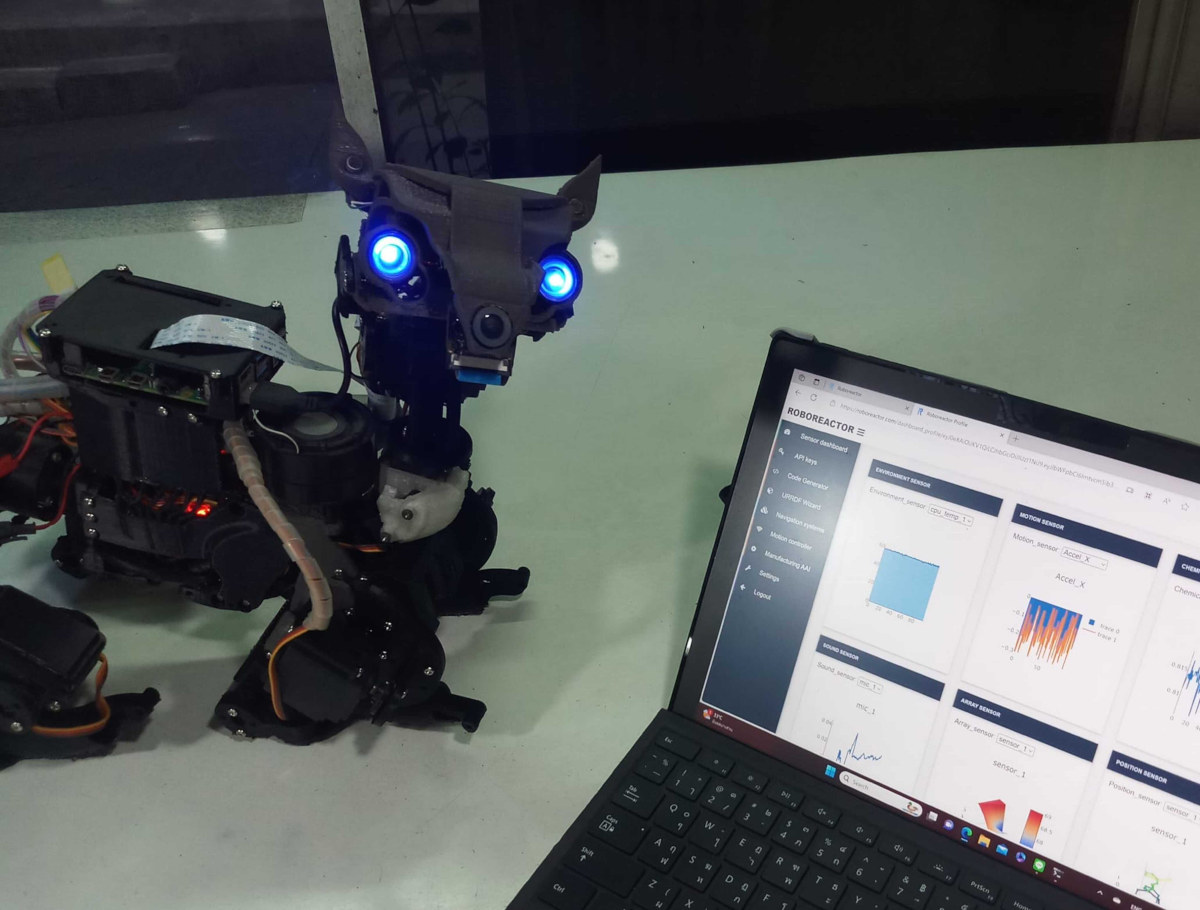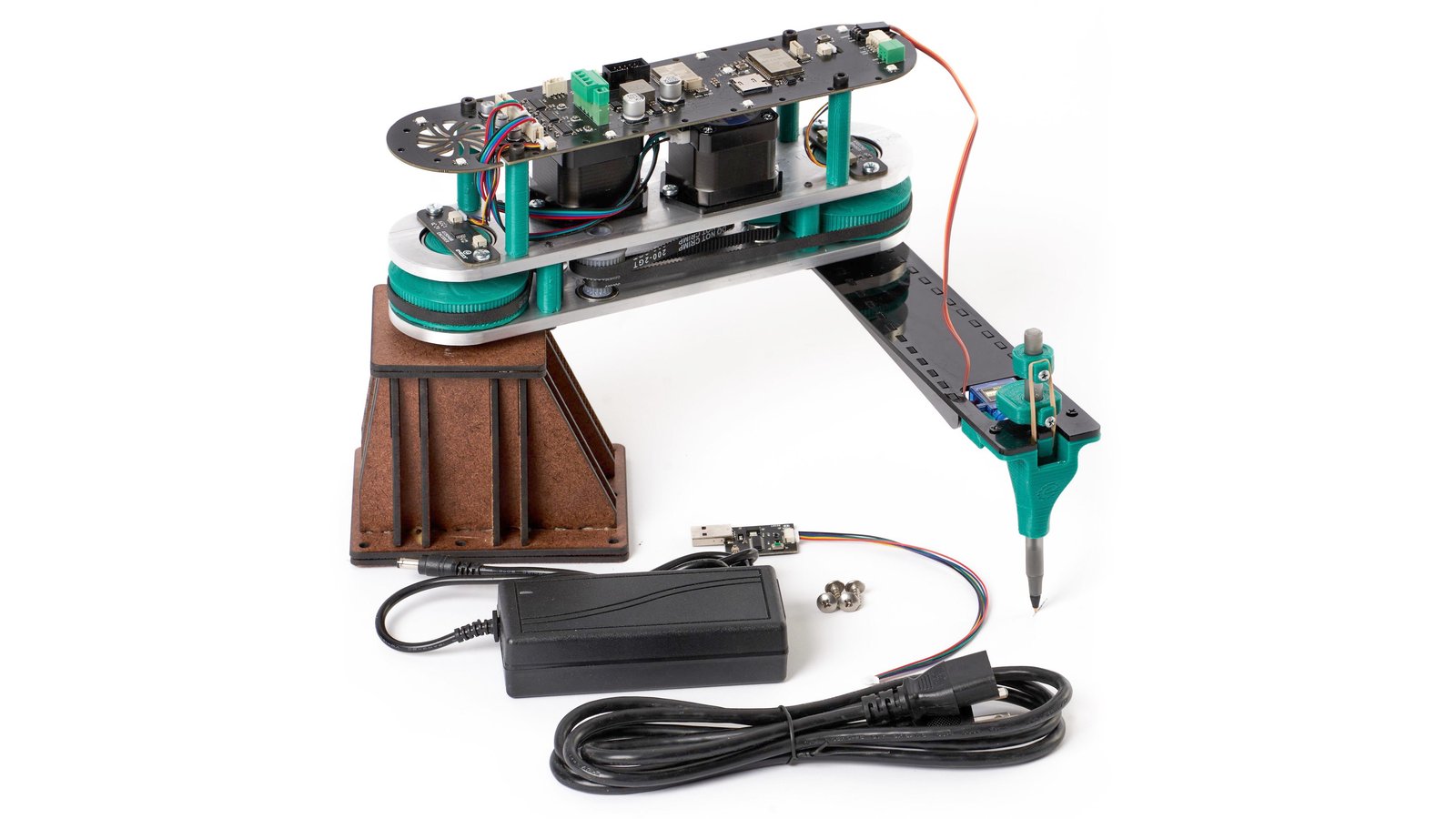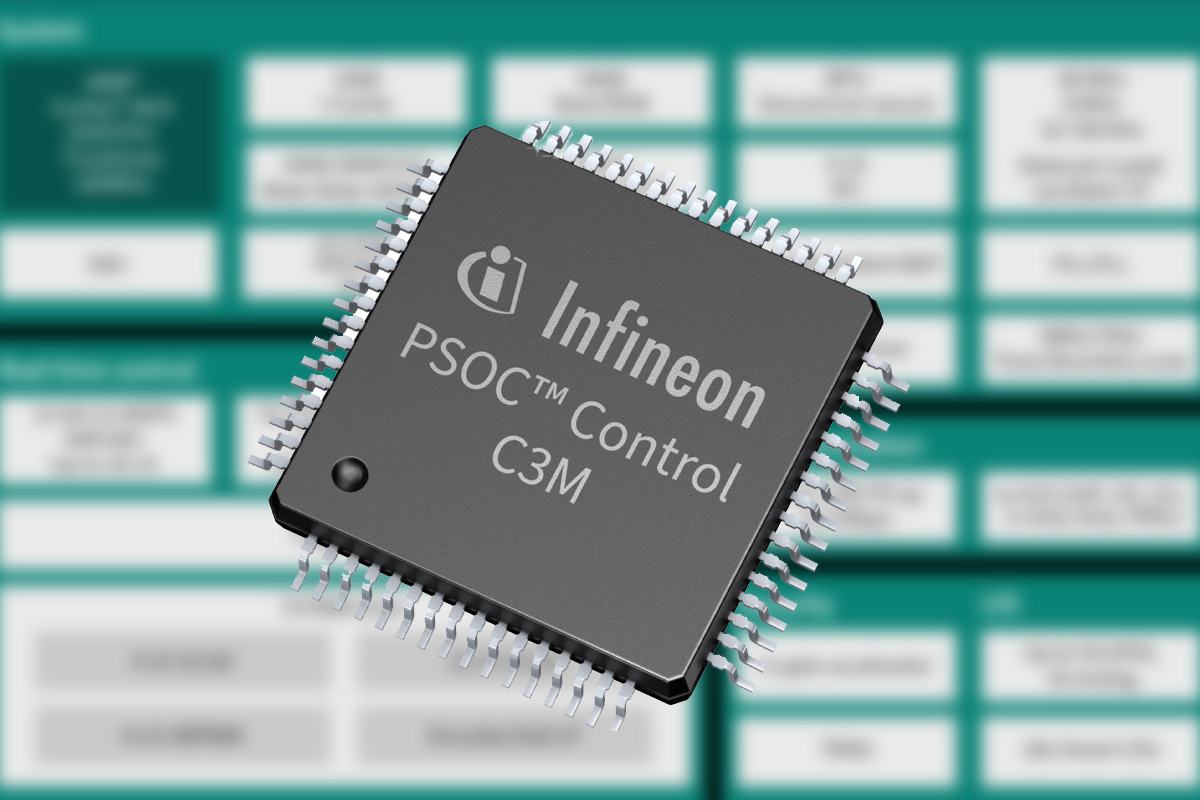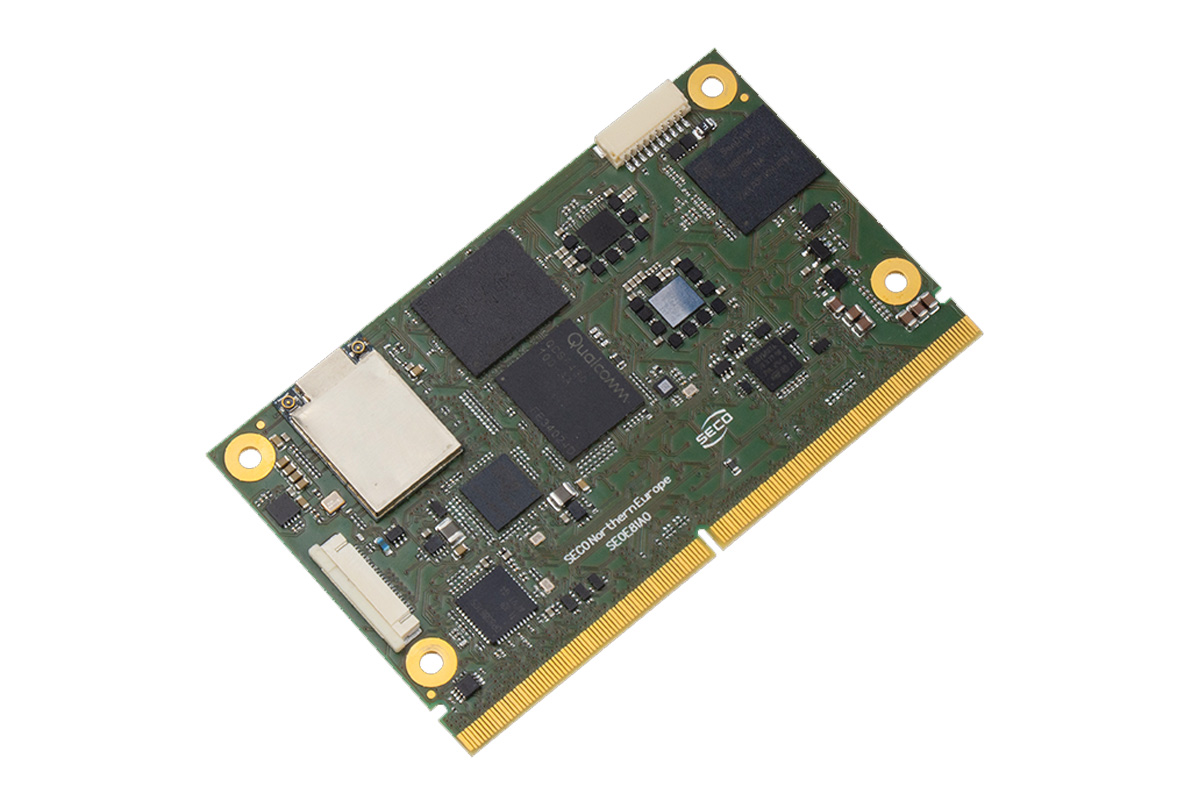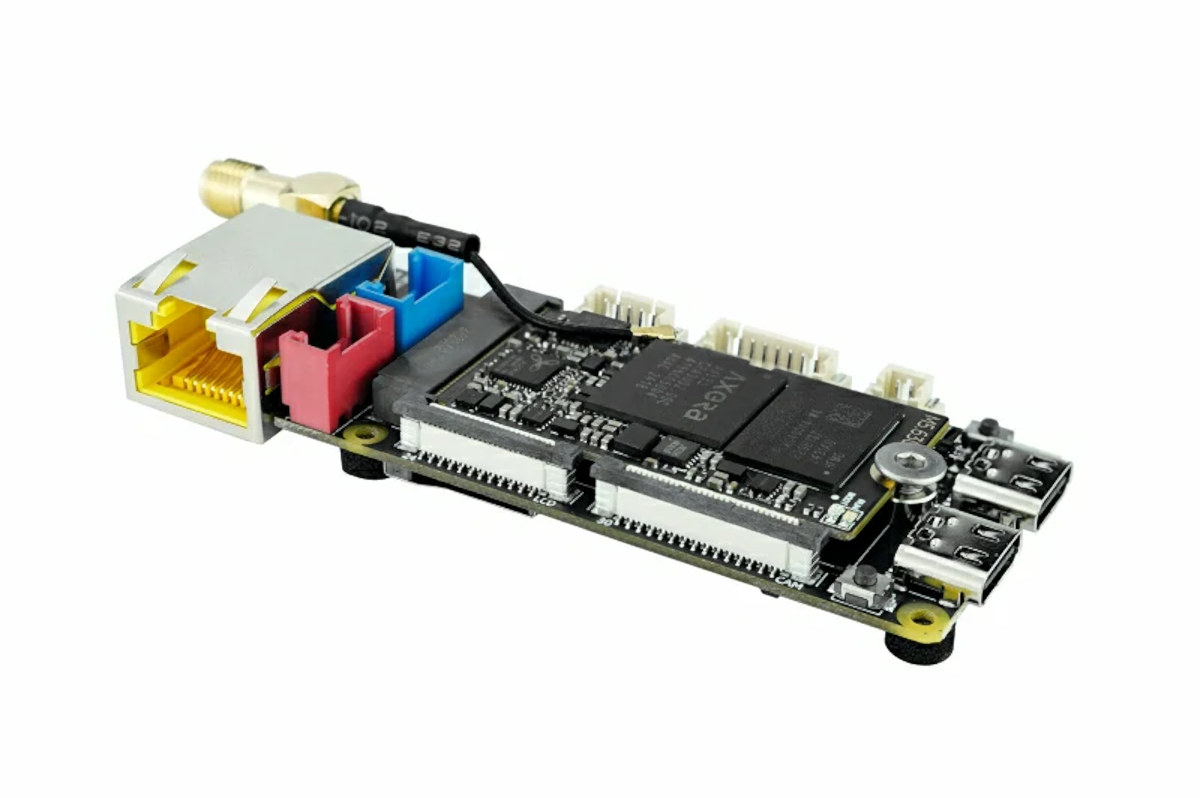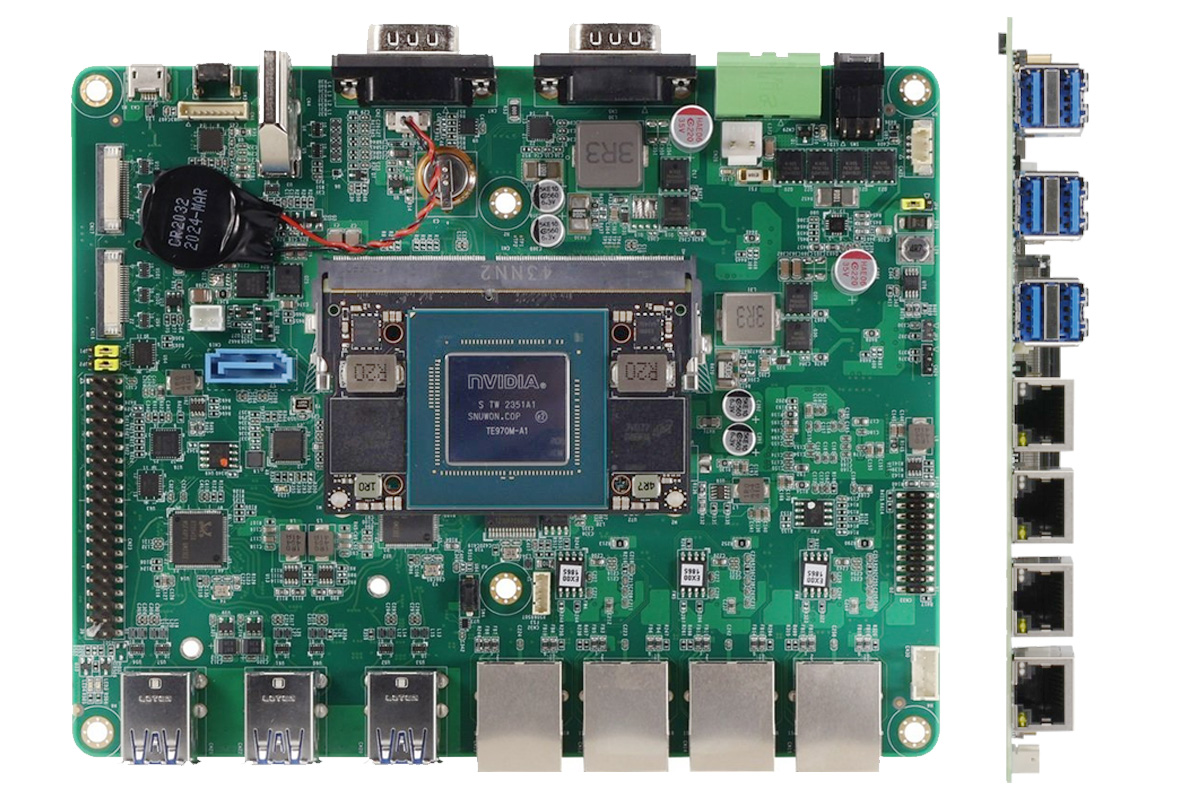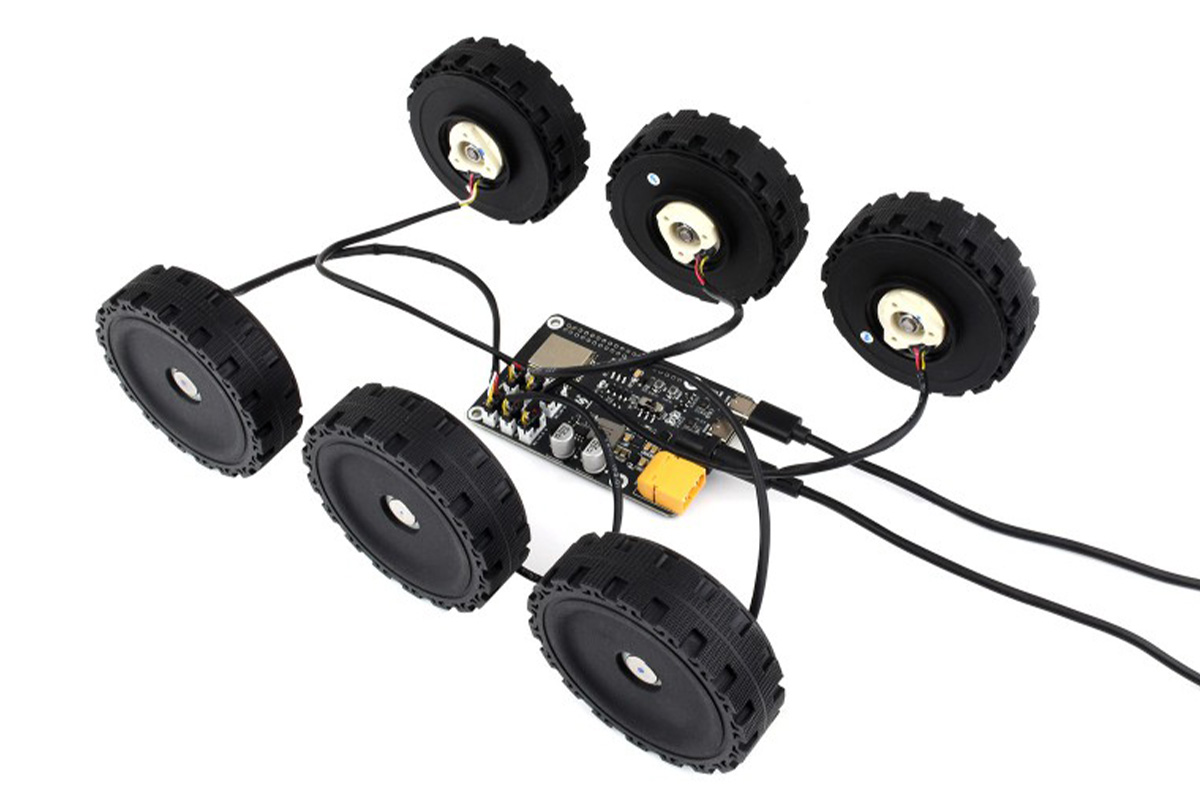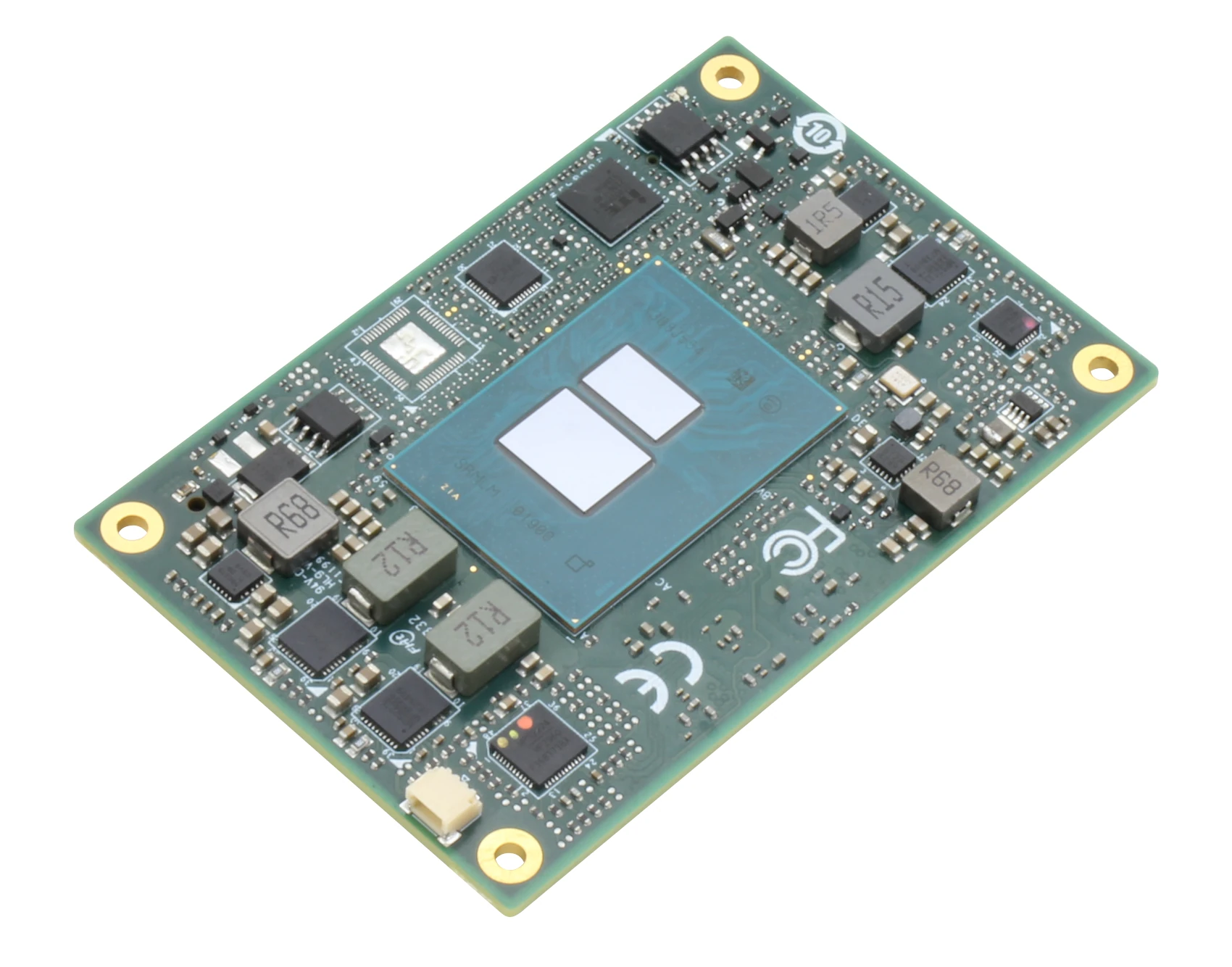Roboreactor is a web-based platform enabling engineers to build robotic and automation systems based on Raspberry Pi, NVIDIA Jetson, or other SBCs from a web browser including parts selection, code generation through visual programming, and generating URDF models from Onshape software. You can also create your robot with LLM if you wish. The first step is to create a project with your robot specifications and download and install the Genflow Mini image to your Raspberry Pi or NVIDIA Jetson SBC. Alternatively, you can install Gemini Mini middleware with a script on other SBCs, but we’re told the process takes up to 10 hours… At this point, you should be able to access data from sensors and other peripherals connected to your board, and you can also start working on the Python code using visual programming through the Roboreactor node generator without having to write code or understand low-level algorithms. Another […]
Tobor open-source, modular robotic arm features two ESP32 modules (Crowdfunding)
Tobor (robot spelled in reverse) is a modular and open-source robotic arm platform powered by the ESP32-WROVER-I and ESP32-WROOM-32 (FluidNC CNC Controller core) modules. It is described as a “fully-featured robotic system that can fit on your desktop and is capable of helping you automate your workflow.” Tobor is billed as a customizable assistant for complex tasks such as assembly line help, CNC design, and rapid prototyping. The Tobor ecosystem includes several open-source components, including robotic arms, motion platforms, sensors, and actuators, that can be combined to create a unique system for “almost any desktop automation.” The Tobor Robot Arm supports multiple toolhead options such as the pen plotter toolhead, z-stage toolhead with 4th axis and suction cup, and the pick and place expansion pack. We have seen other open-source robotic platforms such as the SO-ARM100 AI robotic arm kit, CYOBot v2, and MIKRIK V2 Robot Car. Tobor Robot Arm […]
Infineon PSOC Control C3x real-time Cortex-M33 MCUs are designed for motor control and HVAC systems
Infineon recently launched the PSOC Control C3x family of Arm Cortex-M33 MCUs for real-time control applications in motor control and power conversion systems. The family includes 18 MCUs categorized into two lines, the Entry Line (C3P2, C3M3) and the Main Line (C3P5, C3M5). These MCUs can be used for various applications including home appliances, industrial drives, robots, light electric vehicles (LEVs), solar systems, and HVAC systems. The Entry Line operates at up to 100 MHz and supports a 12-bit SAR ADC with a sampling rate of up to 6 Msps, making it suitable for basic motor control and power conversion tasks. In contrast, the Main Line offers higher performance with up to 180 MHz operation, a faster 12-bit SAR ADC up to 12 Msps, and 4-channel High-Resolution PWM (HRPWM) for precise control. It also supports Wide Bandgap (WBG) switches for high-frequency power systems. Other features of this MCU include DSPs, FPUs, […]
SECO’s SMARC-QCS5430 SMARC SoM and devkit feature Qualcomm QCS5430 SoC for Edge AI and 5G applications
SECO has announced early engineering samples for its SOM-SMARC-QCS5430 system-on-module (SoM) and devkit designed to support IoT and edge computing applications. Built around the Qualcomm QCS5430 processor this SMARC-compliant SoM targets industrial automation, robotics, smart cities, and surveillance.
The module also offers dual MIPI-CSI interfaces for camera and connectivity options including USB 3.1, PCIe Gen3, dual GbE, and optional Wi-Fi and Bluetooth. SECO’s DEV-KIT-SMARC industrial devkit includes all the necessary components for rapid prototyping and integration.
M5Stack LLM630 Compute Kit features Axera AX630C Edge AI SoC for on-device LLM and computer vision processing
M5Stack LLM630 Compute Kit is an Edge AI development platform powered by Axera Tech AX630C AI SoC with a 3.2 TOPS NPU designed to run computer vision (CV) and large language model (LLM) tasks at the edge, in other words, on the device itself without access to the cloud. The LLM630 Compute Kit is also equipped with 4GB LPDDR4 and 32GB eMMC flash and supports both wired and wireless connectivity thanks to a JL2101-N040C Gigabit Ethernet chip and an ESP32-C6 module for 2.4GHz WiFi 6 connectivity. You can also connect a display and a camera through MIPI DSI and CSI connectors. M5Stack LLM630 Compute Kit specifications: SoC – Axera Tech (Aixin in China) AX630C CPU – Dual-core Arm Cortex-A53 @ 1.2 GHz; 32KB I-Cache, 32KB D-Cache, 256KB L2 Cache NPU – 12.8 TOPS @ INT4 (max), 3.2 TOPS @ INT8 ISP – 4K @ 30fps Video – Encoding: 4K; Decoding:1080p […]
AAEON BOXER-8654AI-KIT – NVIDIA Jetson Orin NX-based Edge AI kit features four gigabit Ethernet ports with PoE support
The AAEON BOXER-8654AI-KIT Edge AI kit is a compact development kit built around the NVIDIA Jetson Orin NX modules with four gigabit Ethernet ports (with optional PoE) and an Out-of-Band (OOB) management header, and designed for applications like smart cities, IoT ecosystems, edge AI, and others. The multi-functional carrier board also offers six USB 3.2 Gen 2 ports, HDMI video output, two MIPI CSI, two DB-9 ports for RS-232/422/485 and CAN Bus, and a 40-pin NVIDIA Jetson-compatible GPIO header for I2C, SPI, and UART interfaces. Expansion options include M.2 E and B-key slots for Wi-Fi and 5G modules (with onboard SIM), an M.2 M-Key slot for NVMe SSDs, and a SATA connector. AAEON BOXER-8654AI-KIT specifications SoM – NVIDIA Jetson Orin NX module CPU 8GB Version – 6-core Arm Cortex-A78AE v8.2 64-bit CPU, 1.5MB L2 cache + 4MB L3 cache 16GB Version – 8-core Arm Cortex-A78AE v8.2 64-bit CPU, 2MB L2 […]
ESP32-based Waveshare DDSM Driver HAT (B) for Raspberry Pi supports DDSM400 hub motors
Waveshare has recently launched DDSM Driver HAT (B), a compact Raspberry Pi DDSM (Direct Drive Servo Motor) motor driver designed specifically to drive the DDSM400 hub motors. This board is built around an ESP32 MCU and supports wired (USB and UART) and wireless (2.4GHz WiFi) communication. Additionally, the board features a physical toggle switch, which lets it choose between the ESP32 control or USB control modes. On ESP32 control mode you can control the device through a built-in web application. In the USB control mode, the motor driver can be controlled via USB from a host computer sending JSON commands. An XT60 connector is used to power the board, and programming is done through a USB-C port that connects to the ESP32. The board is suitable for robotics projects, especially for mobile robots in 6×6 or 4×4 configurations. Waveshare DDSM Driver HAT (B) specifications: Wireless MCU – Espressif Systems ESP32-WROOM-32E ESP32 […]
NanoCOM-ADN – A COM Express Type 10 Module based on Intel Alder Lake-N SoC
AAEON NanoCOM-ADN is a compact (84 x 55mm) COM Express Type 10 module based on Intel Alder Lake-N SoCs, namely Processor N50/N97, Atom x7425E, or Core i3-N305 that adds another option to the SMARC, Qseven, and COM Express Type 6 modules offered by the company with the same processors. The NanoCOM-ADN computer-on-module features up to 16GB LPDDR5x soldered-on memory, up to 64GB eMMC flash, and two Intel i226-V 2.5GbE controllers. Its standard 220-pin COM Express board-to-board connector exposes two SATA interfaces, four PCIe Gen3 x1 interfaces, DDI and LVDS video outputs, eight USB interfaces, and more. AAEON explains the Alder Lale-N COM Express Type 10 CPU module is especially suited to digital signage, healthcare imaging, machine vision, industrial, robotics, and edge computing applications. AAEON NanoCOM-ADN specifications: Alder Lake N-series SoC (one or the other) Intel Atom x7425E quad-core processor up to 3.4 GHz with 6MB cache, 24EU Intel UHD […]


